
Starry Nights & Chaikhana Floors: A Journey Through Daykundi, Afghanistan
Updated January 2024, Starry Nights & Chaikhana Floors: A Journey Through Daykundi, Afghanistan was originally published in October 2021
After finishing up a summit of Shah Foladi, a visit to Bamyan’s far west to see the 40 towers of Chehelburj, and a jaunt through the south of Bamyan to summit Koh e Mekh, we finally reached the checkpoint gates into Daykundi Province’s Miramor District perched high on Qunaq Pass.
Before leaving for Daykundi, friends had told me that there wasn’t much to see in the province, that it wasn’t as pretty as Bamyan, but that I’d find plenty of adventure there, that the Hazara who populate Daykundi were some of the poorest in Afghanistan and yet some of the kindest and most welcoming.
So armed with next to no information we set sail, figuring it out and gaining useful contacts along the way on one hell of a grand adventure.
Learn more about Afghanistan with the Afghanistan Travel Guide
Need Travel Insurance and Evacuation Services for Afghanistan?
Start shopping for travel insurance plans over at IATI Insurance. Readers of the Adventures of Nicole get a 5% discount off your plan.
The Adventures of Nicole partners with Global Rescue to offer the world’s leading medical evacuation and security advisory services. To travel with peace of mind, shop evacuation coverage at Global Rescue.
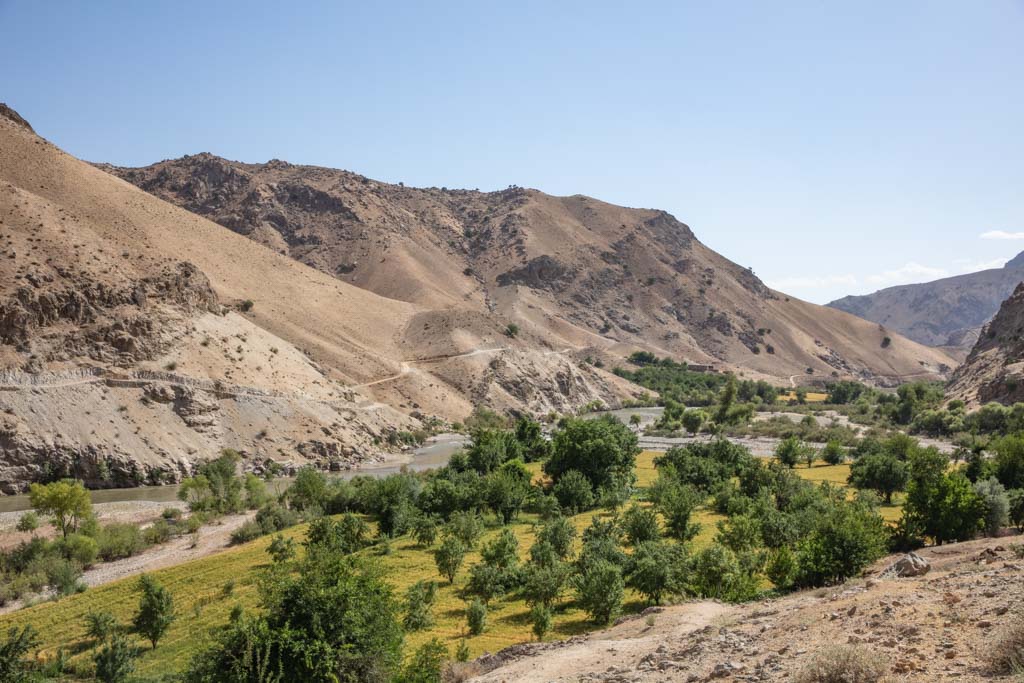
A Little Background on Daykundi
Daykundi Province, located in Afghanistan’s central highlands forms a large chunk of the Hazarajat, the homeland of the Hazara people, along with Bamyan and Ghor Provinces. Swaths of Ghazni, Maidan Wardak, Parwan, and Uruzgan Provinces comprise the Hazarajat as well.
Daykundi is one of Afghanistan’s newest provinces, gaining provincial status in March 2004. It was previously part of Uruzgan Province.
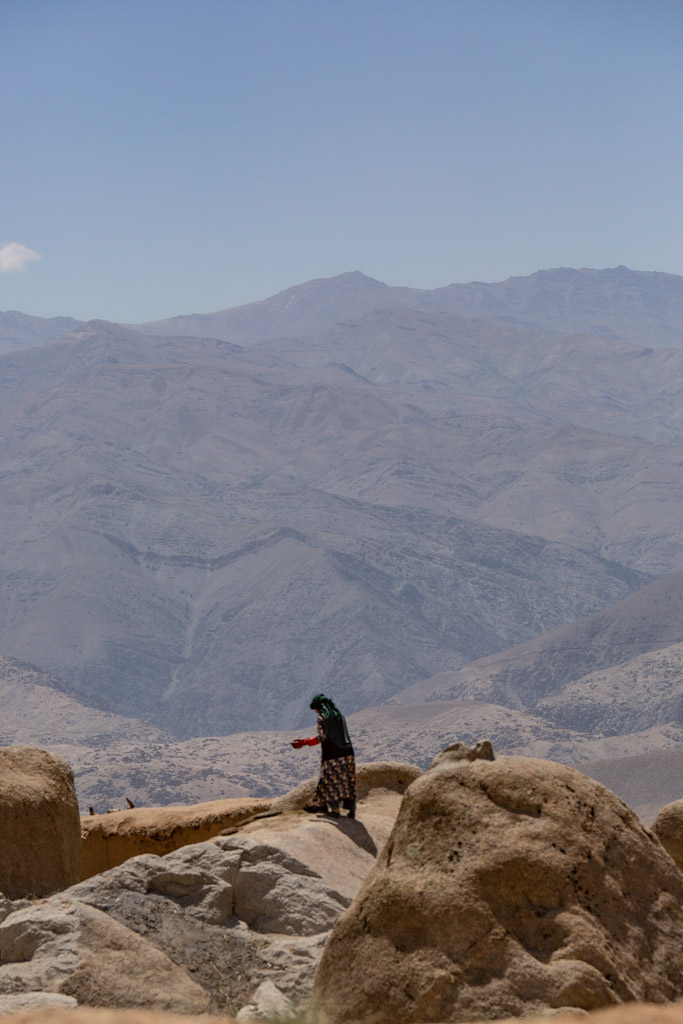
Deeper into the Hazarajat
Back into the district capital of Yakawlang in neighboring Bamyan Province, we turned south the begin the journey to Daykundi, passing through the rural districts of Panjab and Waras. In Panjab, breaking for chai in a ramshackle chaikhana, and in Waras we spent a couple of nights in the district.
Read up more about the Hazarajat: The Bamyan Travel Guide
Onto Miramor District
The main Yakawlang-Nili Highway passes through a checkpoint sat high in 3,400 meter Qunaq Pass, with a craggy mountain range serving as the natural border between the two provinces. We rolled up to the checkpoint in the morning sun to two friendly officers who chatted with us asking the standard questions of where we were coming from and what our destination was. They quickly registered the three of us, mostly for safety reasons as there are militants that had trickled into the fringes of the province, namely in the border areas pf Miramor, Kiti, Kajran, and Kadir Districts, and Gizab District that had already fallen back under the control of Uruzgan Province.
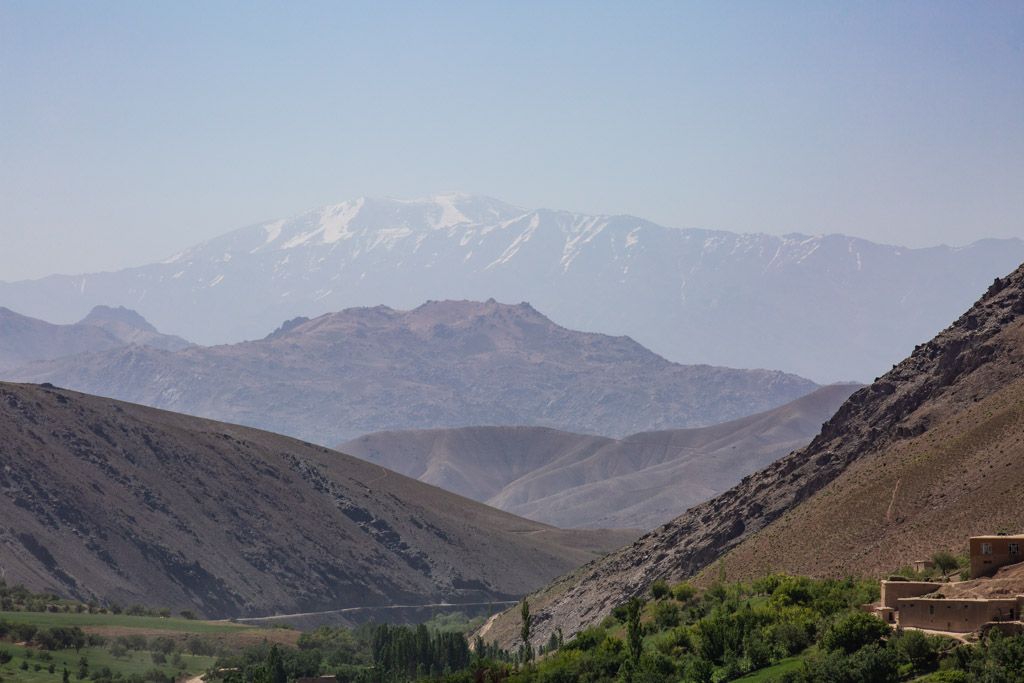
Soon we were navigating the hairpin turns down from Qunaq Pass to Zadakbum Village, surrounded by views arider and less colorful than Bamyan. The dirt road trundled along a deep dry crevasse filled with a green oasis as we passed through the villages of Paya Bum, Jangiay, and Khushkdara before reaching the bustling bazaar town of Jawz.
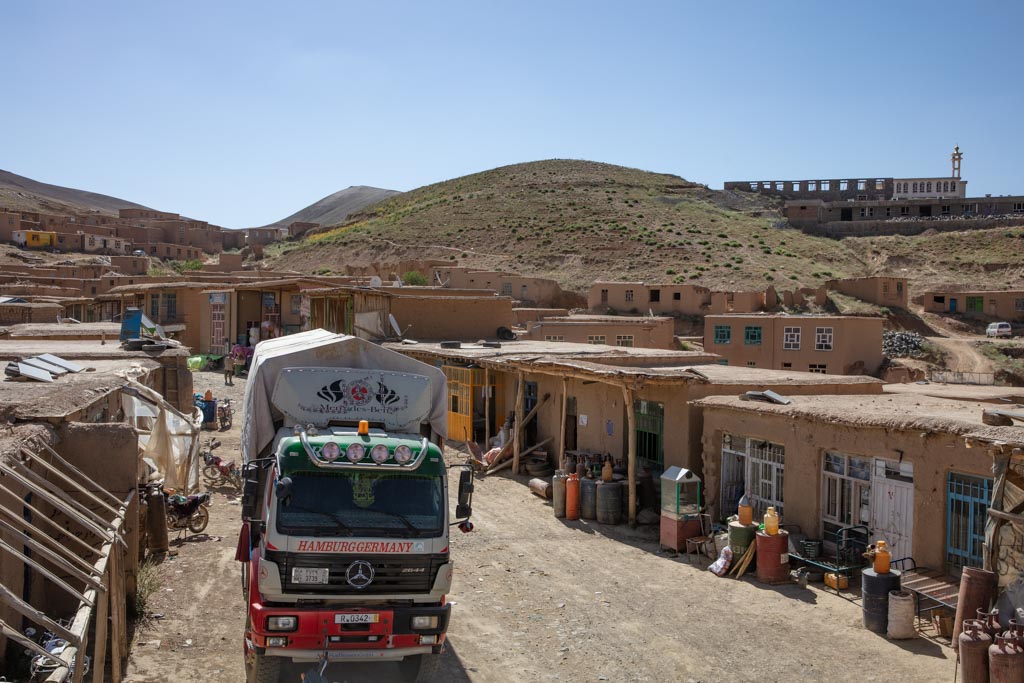
In Jawz we searched for a chaikhana, quickly finding a second-story room from which we had grand views over the valley back toward Qunaq to sip chai and mull over our plan. None of the three of us had been to Daykundi before, the other two even having been born and raised in Bamyan.

Even after our lengthy break, all we were able to decide was to continue south and see where we ended up. From Bazaar Jawz, we continued along the verdant valley of orchards and crops, ringed in craggy peaks past the villages of Churya, Litak, and Kajkaman before arriving in Cheprask.
Cheprask was a relatively small village in size, though it was quite busy midday. The main road that passed through was full of life, from women walking in groups and popping out of shops, kids playing, to men sat chatting in shaded corners.

We parked the car and decided to explore the village on foot, striking up conversations with locals who could direct us to any potential nearby attractions. This was somewhat of a recce trip for us, looking to gather information on future itineraries with potential in the remote region.
Exploring Shahristan
Continuing to Shahristan we made many stops along the route taking in the views of jagged peaks and odd rock formations. The rock stacks and strewn boulders gave the Shahristan District a feel as if a dinosaur could have marched out across the dirt road at any time.
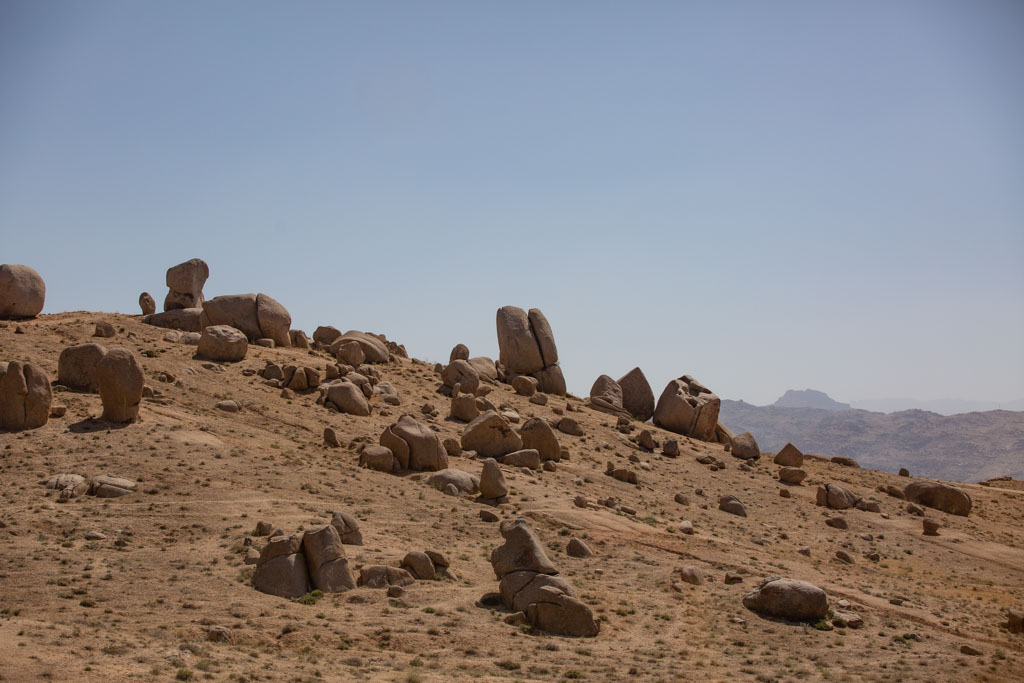
Naturally, we ended up inside a busy chaikhana on arrival, whose entrance was located on a backroad. The chaikhana was unusually co-ed considering we were still in Afghanistan. A large group of women were there for lunch following a class they were in, and a mixed group of men and women sat on the other side.
We sat down on the one end of the rooms with the mixture of people and put in an order for Qabuli pulao. Pretty soon we had attracted the attention of one woman in the room who moved across the mat to sit next to me upon learning that I was a foreigner.
She was a fluent English speaker, having studied at university in Bamyan and now teaching back in her home province of Daykundi. We chatted for a decent chunk of the afternoon before she had to catch her ride down to Nili to spend her break from work with her family.
Although Daykundi has largely remained one of Afghanistan’s economically poorest regions, the people of Daykundi place great importance on education and especially the education of women. For Afghanistan, life in Daykundi is quite liberal in comparison to much of the remainder of the nation because of this. The province was even led under a female governor from 2015-2017 under Masooma Muradi, one of the very few women to have held the position of governor in the country.
In the meantime, we also had drawn in a man from Shahristan to the conversation. He was more than interested in what on earth could have brought us to Daykundi Province. In the end, he kindly offered us to stay with his family in Shahristan and told us to meet him back at the chaikhana.
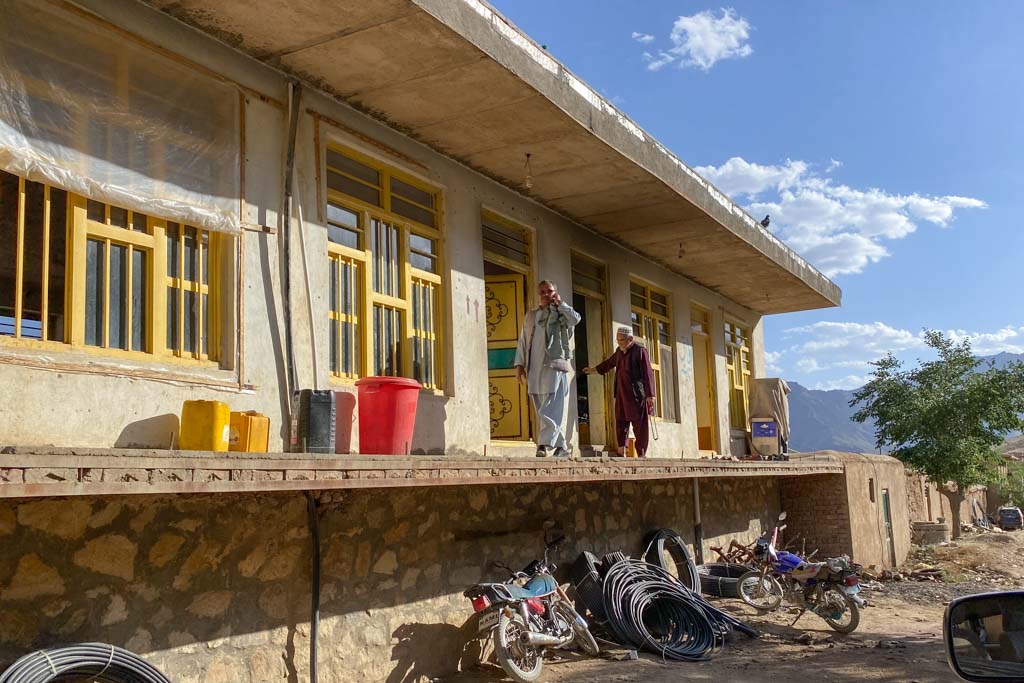
As recommended by another friendly local in the chaikhana, we headed over to the Shahristan District Office to meet with one of the district administrators to get an idea of what we could do around town.
A man in a pale blue shalwar kameez and black vest welcomed us into this office. The man we met previously at the chaikhana had already put in a call to the office, explaining that we were stopping by to speak with him.
After the quick omnipresent glass of chai, we all piled in the car as our new friend had already planned a grand itinerary around Shahristan for us.

The Helmand River
We made our way along a dusty cliff-edge track that passed by strangely piled boulders on a slow descent from Shahristan to the Helmand River. Eventually, the oasis-like band of fruit trees that followed the course of the river through the wide valley cut by the Helmand came into view.
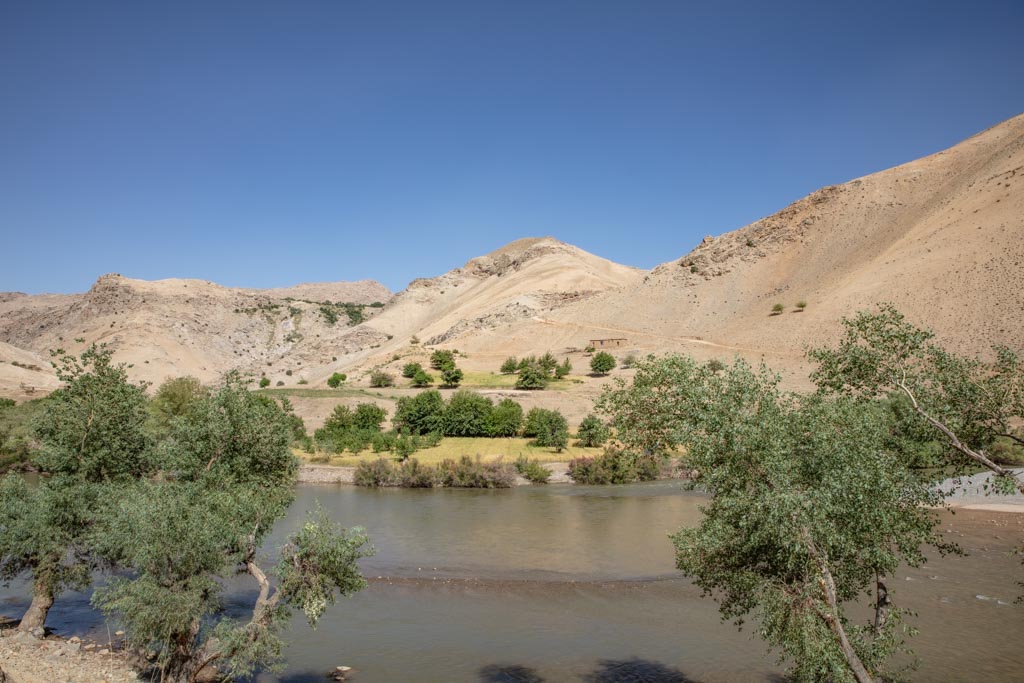
The Helmand River extends 1,150 kilometers, fed by the snow-capped peaks of the Koh e Baba Mountains just west of Kabul and Paghman. The river then passes to the north of Unai Pass to enter the eastern fringe of the Hazarajat in Maidan Wardak Province near the town of Behsud before flowing into Daykundi Province. Continuing from Daykundi it enters Uruzgan before entering Helmand Province where it crosses into the Dasht i Largo Desert, the Sistan Marshes, and onto Nimruz Province before crossing the border into Iran.
A wooden footbridge crosses the Helmand to the other side, connecting smaller qishlaqs on the south side of the river to larger Shahristan and beyond. Several boys were enjoying the early summer sun, taking turns diving off of the bridge and into the waters below.

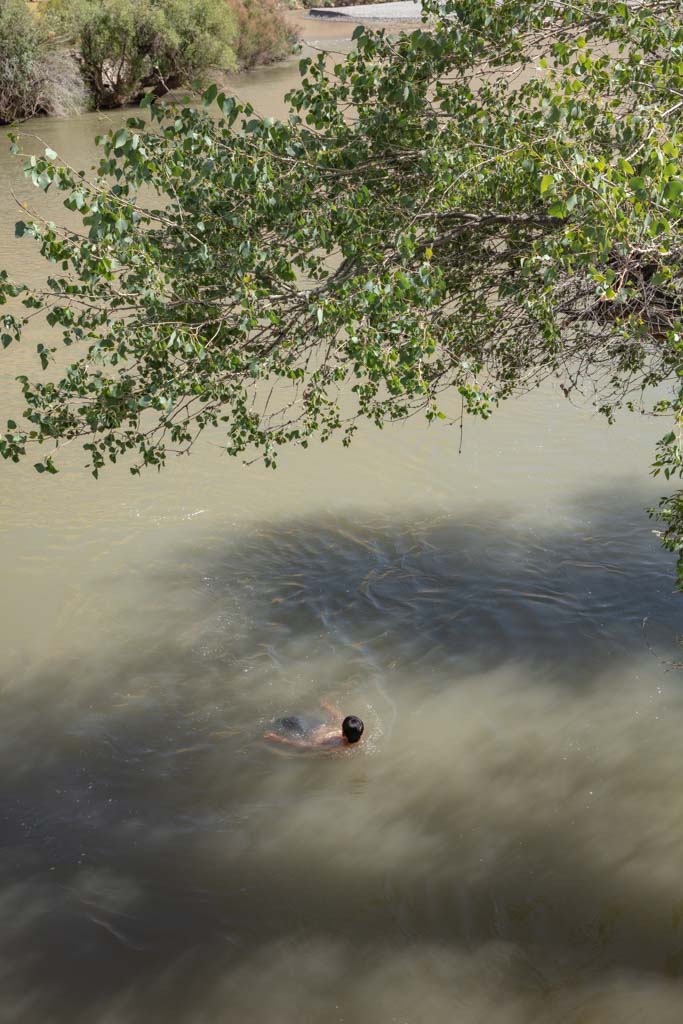
We spent the day exploring the villages of Kodugh, Shakorabod, and Balna Tughay on the southern shores of the Helmand River. These villages that dot the valley are known for their apricots, mulberries, walnuts, and almonds.
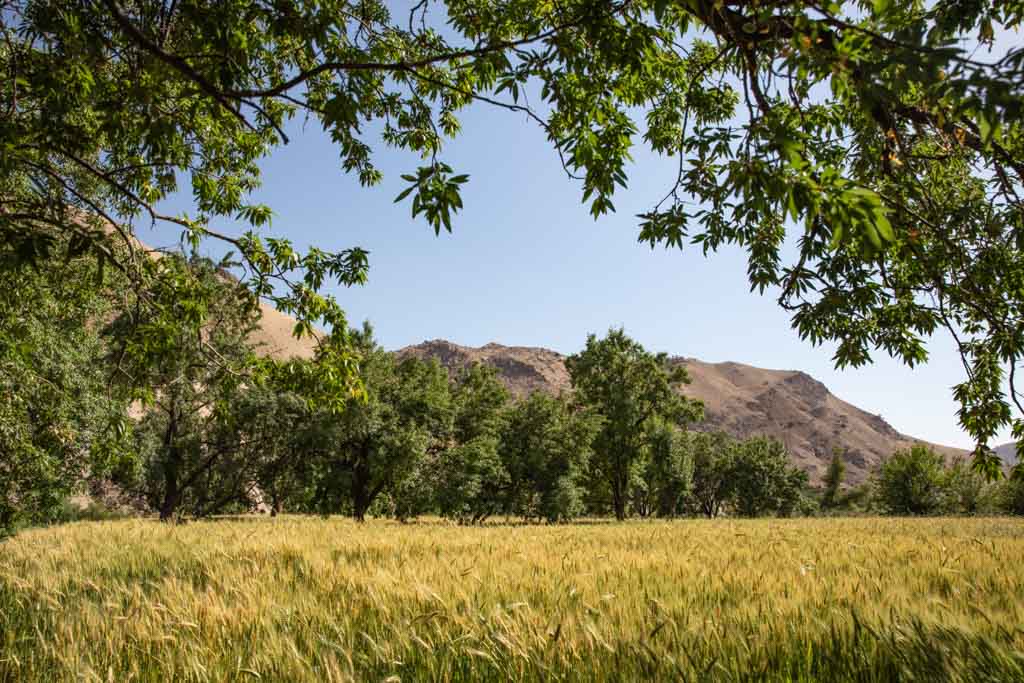
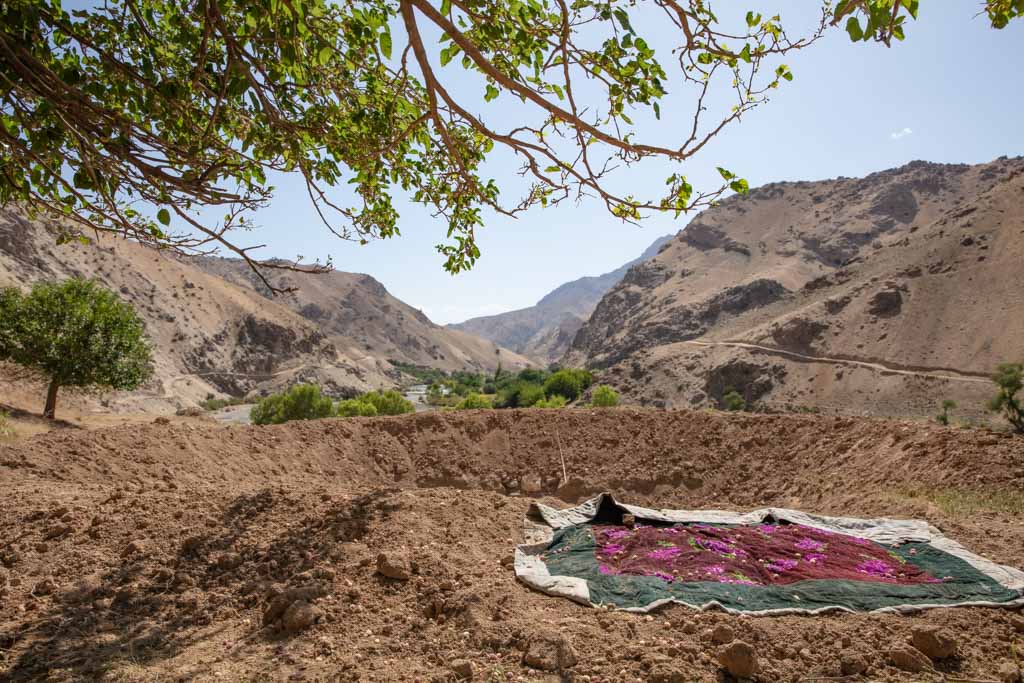

Children happily played in the fields and climbed fruit trees here along the Helmand River and for a moment it was easy to forget that we were in fact in Afghanistan still.
Village Life in Daraztag
Following our visit to the Helmand River, we returned to the district office, dropping off our impromptu tour guide and then to the chaikhana back in the Shahristan Bazaar to meet the man who had invited us to stay with his family previously. As we had spent many nights at this point in the journey across Bamyan and Daykundi sleeping in dusty chaikhanas that serve as modern-day caravanserais to long-distance travelers we decided to take up the kind offer.
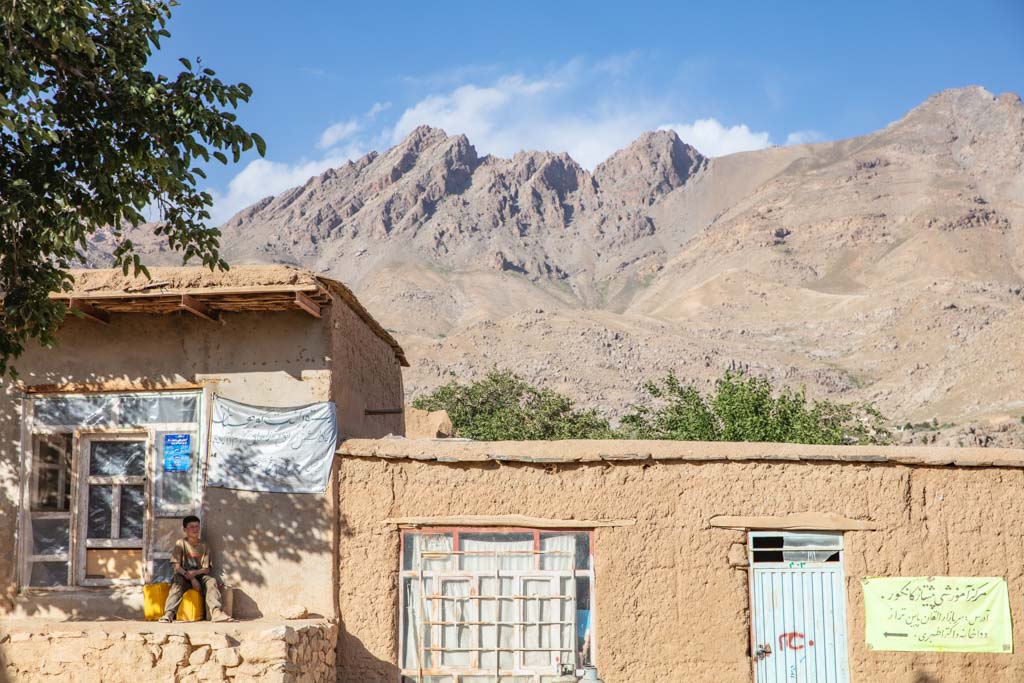
We pulled up along the entrance door to the low-slung tea house and waited around for a few minutes before the man popped up wearing the same pale green shalwar and white knit skull cap he had on when we had met earlier in the day (we’ll call him Mohammed as I don’t want to give away to many details about him given the current situation in Daykundi).
Mohammed instructed us to make a few stops on the way out of Shahristan Bazaar, hopping out for melons, some electric yellow soda pop, and bags of rice. Just west of the bazaar Mohammed pointed out a set of tracks from the main dirt road and directed us to follow them.
The narrow tracks seemed to go on forever, zigzagging down through a mountainous desert landscape as Mohammed explained that he typically would find a ride into Shahristan each day to do business before getting picked up and brought back to his village of Daraztag in the evenings.
Eventually, we reached a stone bridge that crossed over a tributary that fed into the larger Helmand River south of here. On the other side, it was an equally perilous venture to get up the other side of the canyon.
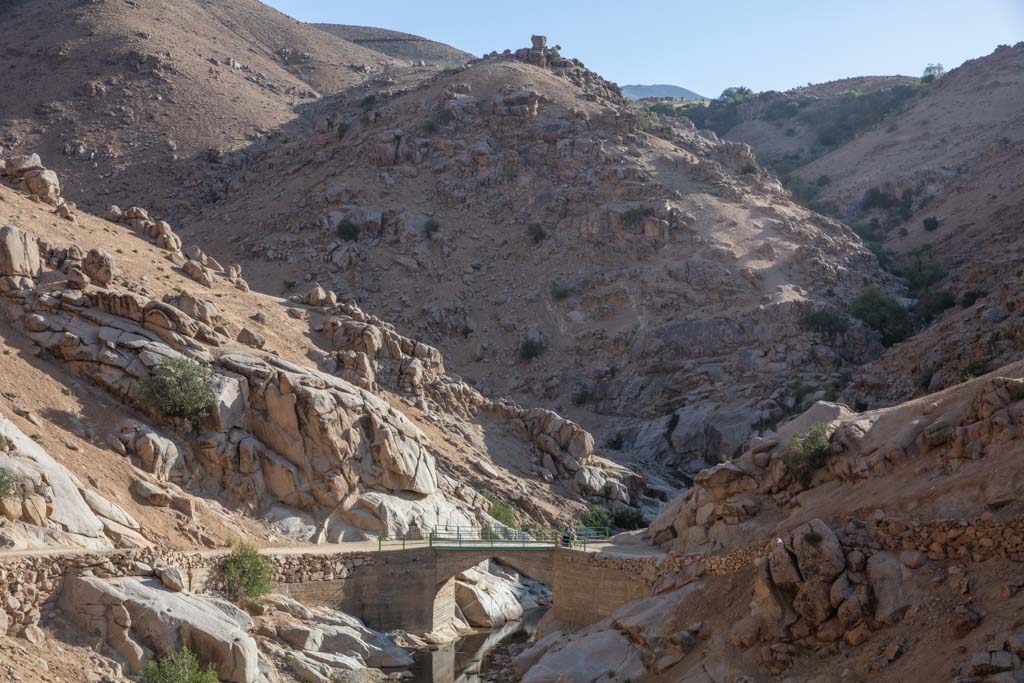
After what felt like nearly an hour we arrived at Mohammed’s family home set in a beautiful bowl of mountains surrounded by a scattering of homes as the last bit of sun lit up the village of Daraztag.
We were met by Mohammed’s family on the roof of the lower part of their house where blankets had already been rolled out in preparation for our arrival and the mandatory chai to follow. Three generations of Mohammed’s family lived on the family property.

As the night unfurled and the sun was replaced by the twinkling stars of our galaxy above, the temperature began to drop and our party was moved inside their guest room.
The family prepared a grand meal that night with Mohammed, his wife, and his eldest son telling stories of their experience during the Afghan Civil War, battles to defend the borders of the Hazarajat against advances of the Taliban in the past.


Following dinner, Mohammed’s daughters and daughters-in-law began collecting dishes to make room to set us up to sleep in their opulent guestroom. Given the balmy temperatures of Daraztag in comparison to some of the frigid nights we had up at higher elevations in Bamyan, we insisted on sleeping under the stars on the roof of the family home.
The night sky was crystal clear tucked into the mountainside of a small village in the Shahristan District which made sleeping outside all the better.

We awoke the next morning to the crowing of a rooster outside as the sun warmed the village to life. Soon after Mohammed and family joined us on the rooftop for an ethereal sunrise breakfast.
We said our goodbyes on the roof, exchanging contact information to stay in touch and so that I could send the family photos I had taken on my camera after I returned home.
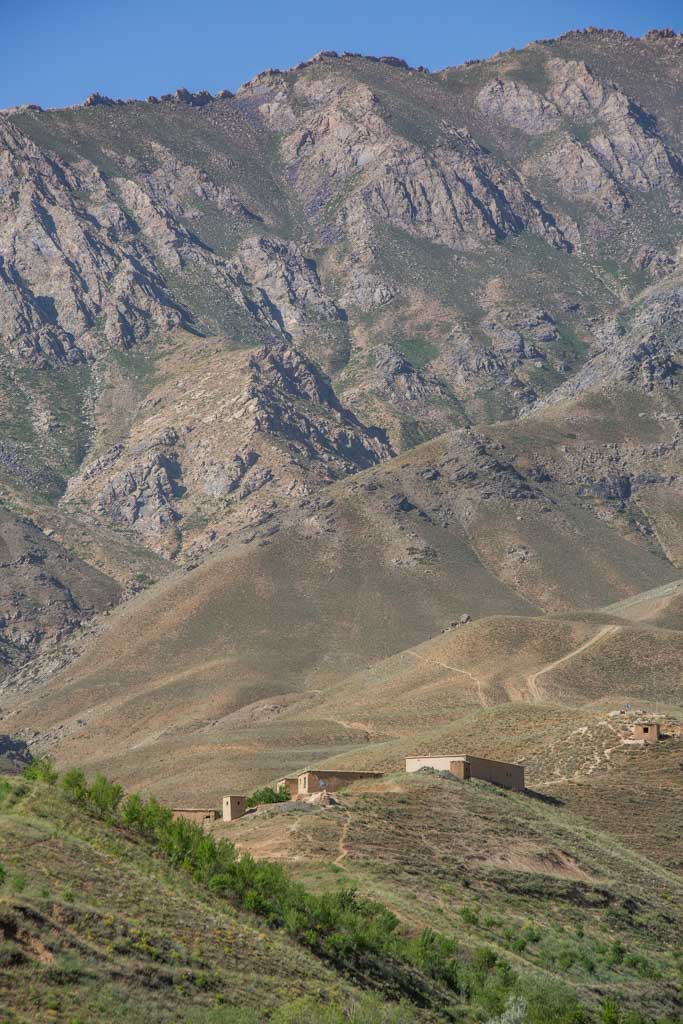
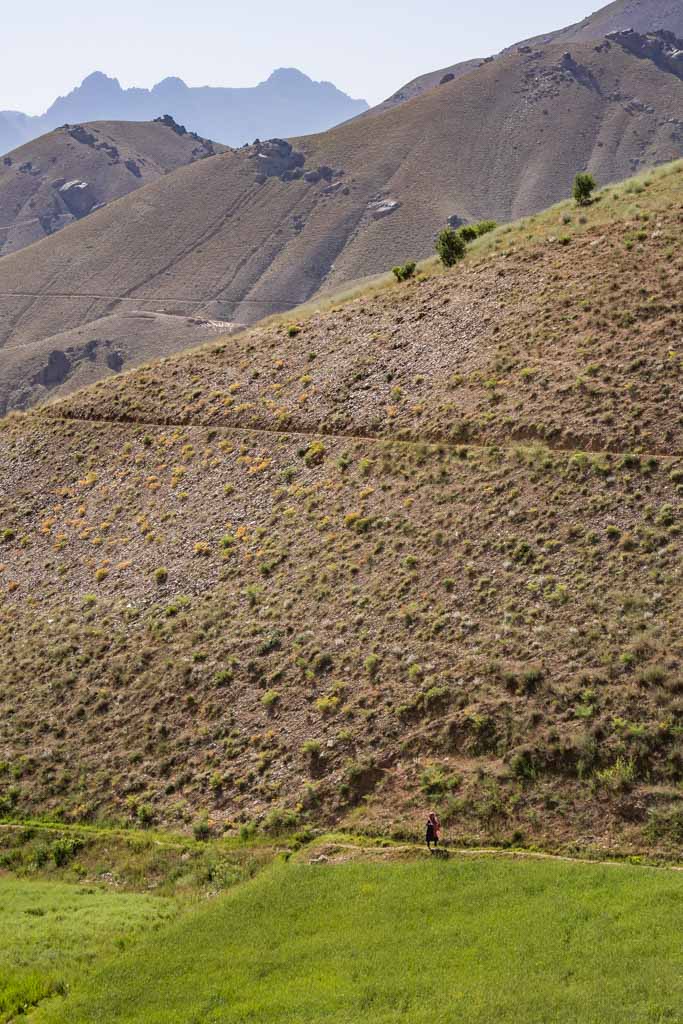
On to the Capital of Nili
Backtracking to Shahristan from which we once came, we continued west, cutting through remote ranges dotted with high mountain villages to descend on the provincial capital of Nili.
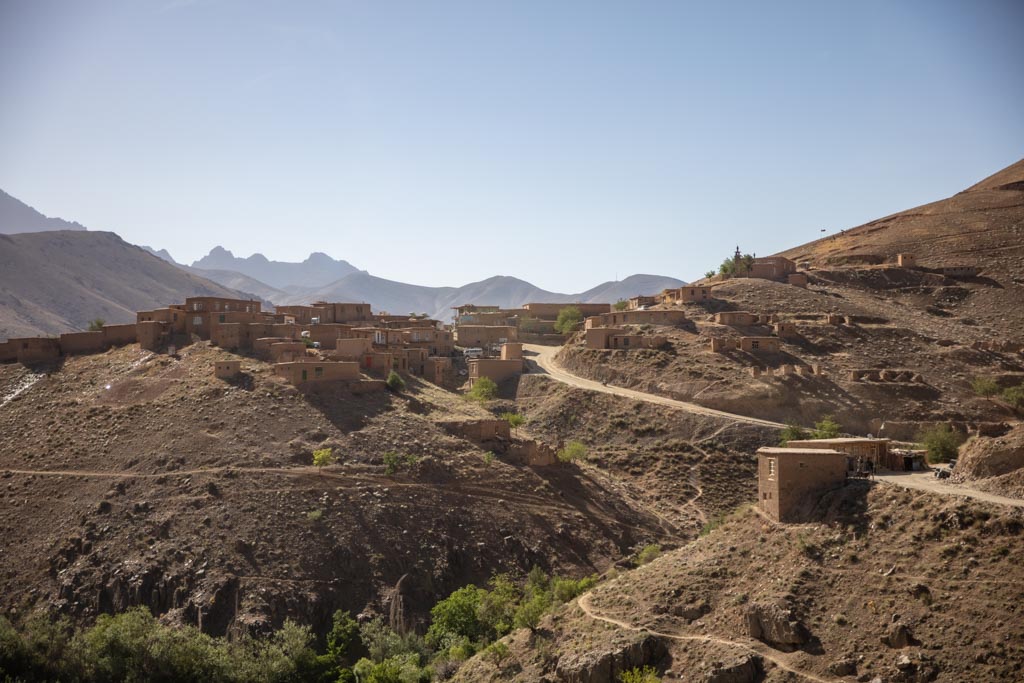
While Nili is the capital of Daykundi, I wouldn’t necessarily call it a city per se, more akin to an overgrown and charmingly ramshackle village. We drove through Nili, stopping in the bazaar to ask if there was a guesthouse, and were directed to the Nili Airport where the Barg e Badam Hotel sat just off its runway.
The three of us were elated to have a shower after spending several consecutive nights sleeping in the aforementioned chaikhanas, in tents, and on the rooftops of rural homes without access to running water. I handed over my documents to get checked into my room as my two travel buddies headed off into the city to meet with a friend of a friend in Kabul who had put us in contact.
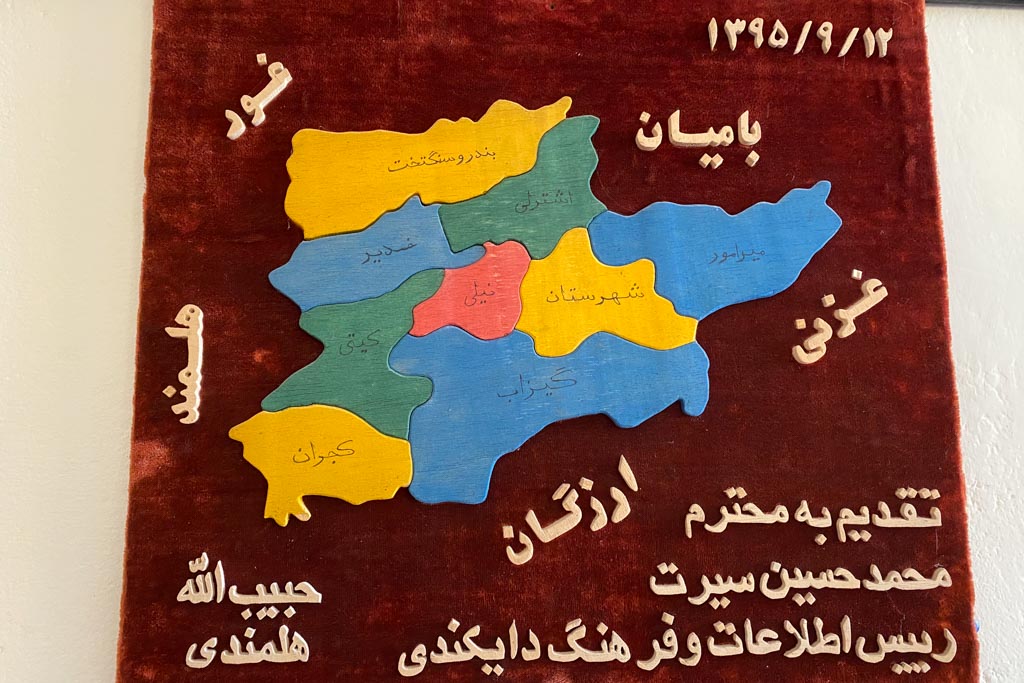
We would later all meet together in a nondescript restaurant in the middle of Nili, now with the friend of my friend in Kabul (we’ll call him Mahmud for anonymities sake). Mahmud had already arranged for us to visit the office of the ministry of history and culture to learn a bit more about the history and culture of Daykundi before taking us to explore a local castle.
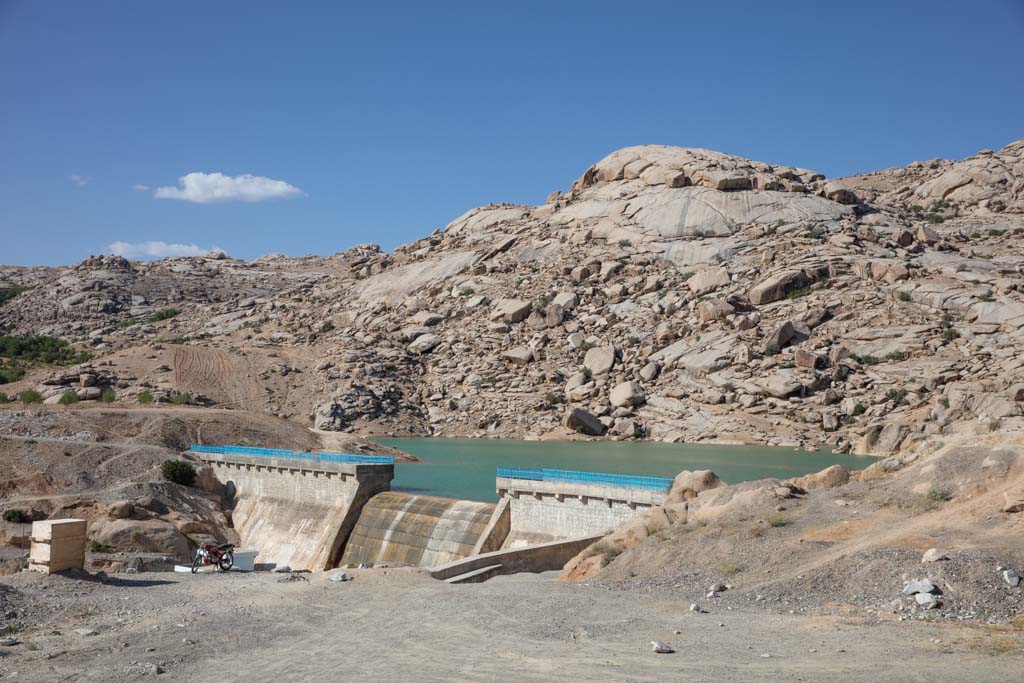
Castles & Dams at Qala Haji Yusefbek
In the afternoon, we departed Nili passing the small Sukhtook Dam & Reservoir before continuing to Qala Haji Yusefbek.
Qala Haji Yusefbek is a historical site that has caused a bit of a rift between traditional ways and modern education, a common and repeated struggle, especially in the Hazarajat Region.
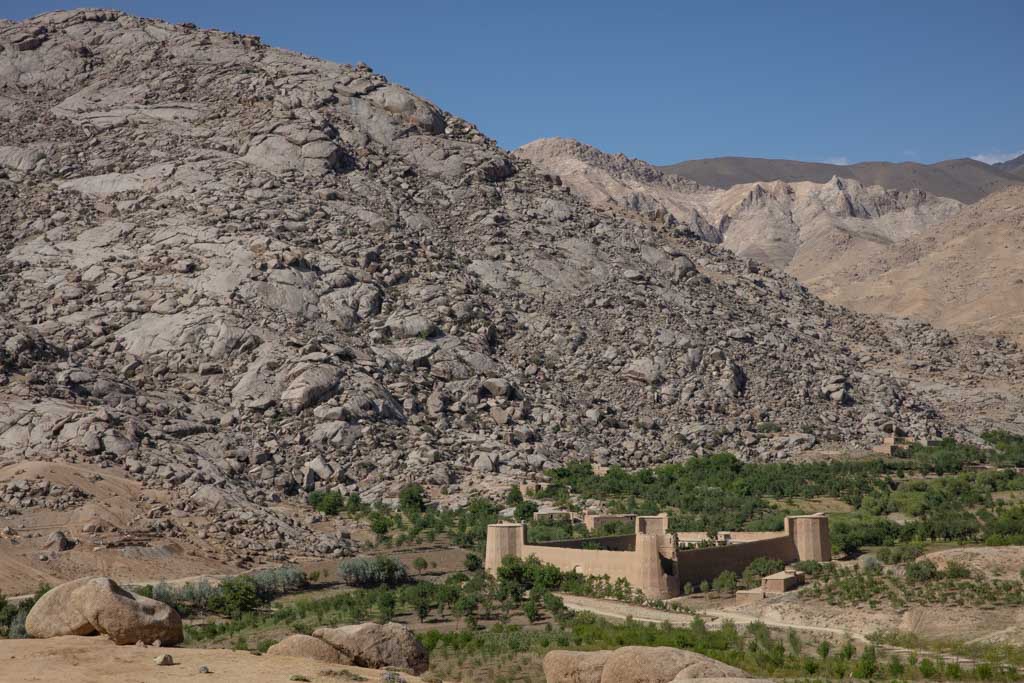
The castle isn’t so old, only being about 90-100 years old was built by a family of Khans, whose 4th generation descendants currently live within the castle walls and farm the surrounding lands.

Mullahs that were either from or backed by Iran (I wasn’t able to clarify that), that were against the Qala and its educational practices, ordered male members of the Khan family to be slain and their wives taken as hostages about 50 or 60 years ago. Some succumbed while others managed to escape.
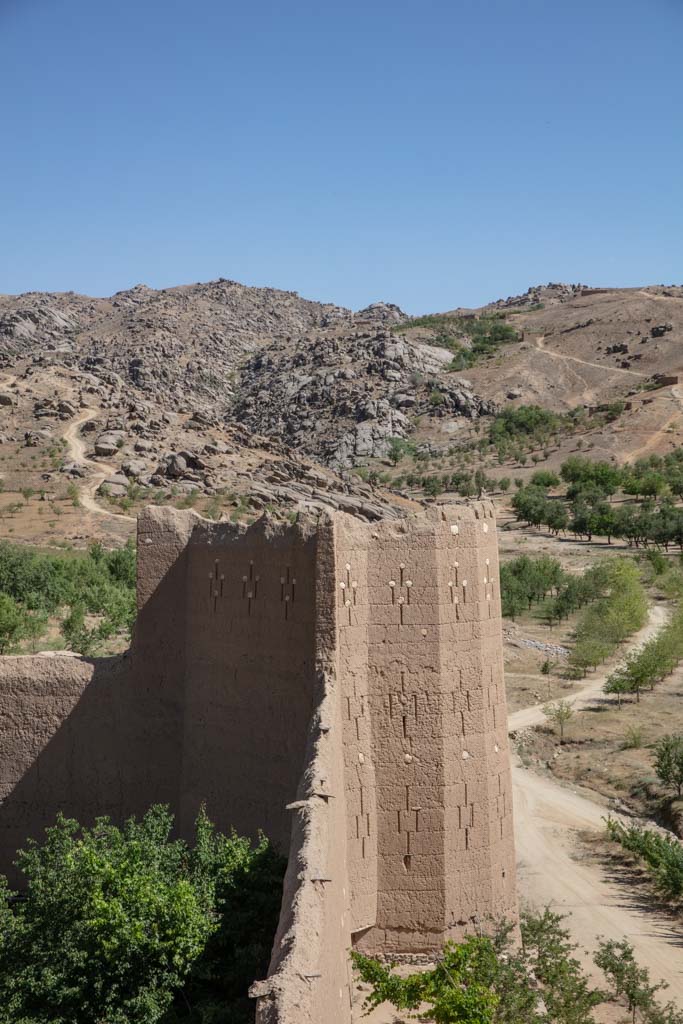
Fast forward to the years following the US Invasion of Afghanistan and the Daykundi Region saw special forces, as well as foreign NGOs and other organizations, arrive in a bid to help build schools in the impoverished province. Again, there was a power struggle between the organizations and mullahs regarding the education of the public, but this time the local population fought back and won.
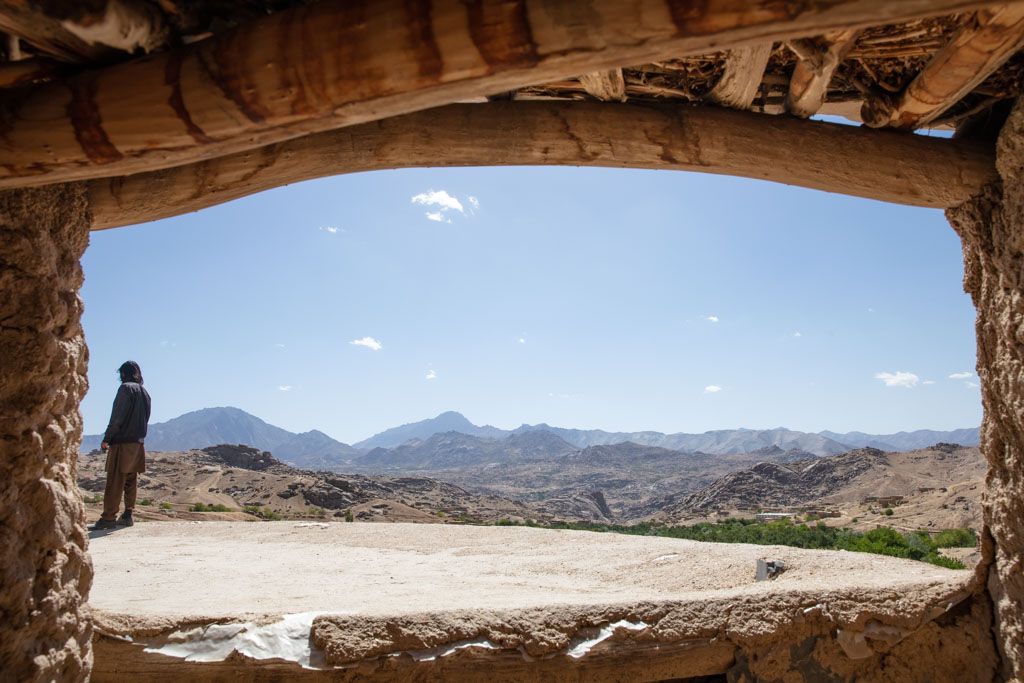
The Khan family welcomed us to Qala Haji Yusefbek, giving us a grand tour of the castle and its grounds, as well as showing us some finely painted rooms of the manor. There are several more historic Qalas scattered throughout Daykundi Province’s districts.

Almonds and the Hills of Nili & Mesh Ulya
Returning to Nili from Qala Haji Yusefbek took us up into the foothills, this time to learn more about the agriculture of the area through Mohammed’s business partner living (we’ll call him Mahdi) in the hills that roll up toward the village of Mesh Ulya.
After a traditional dinner of shir birinj (milk rice), we headed for bed up at the house in the foothills. The next day we all awoke at sunrise to spend the day learning about the significance of the almond orchards of Daykundi Province.

Years ago it was noticed that Daykundi yielded the perfect climate and weather for almond growing owing to its hot and dry summers and mild winters. Different agencies, including Oxfam, moved in to help develop the agricultural practice to increase production, and therefore, livelihood.
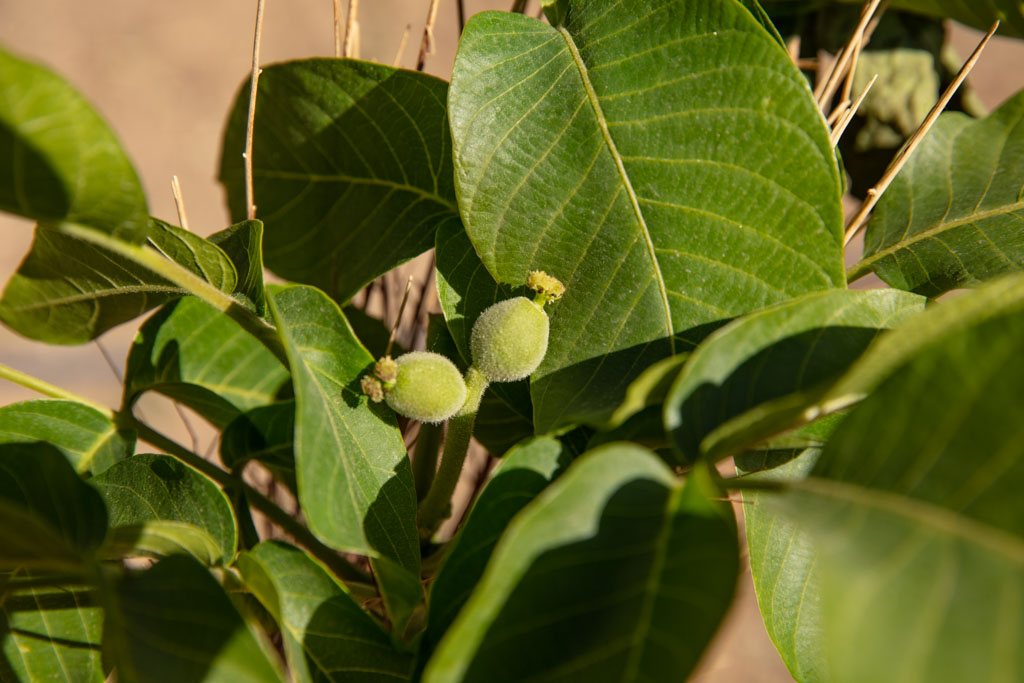
People all around Daykundi were taught improved irrigation techniques, which was apparent from the green plots you would see high on arid mountainsides as we traveled through the province.
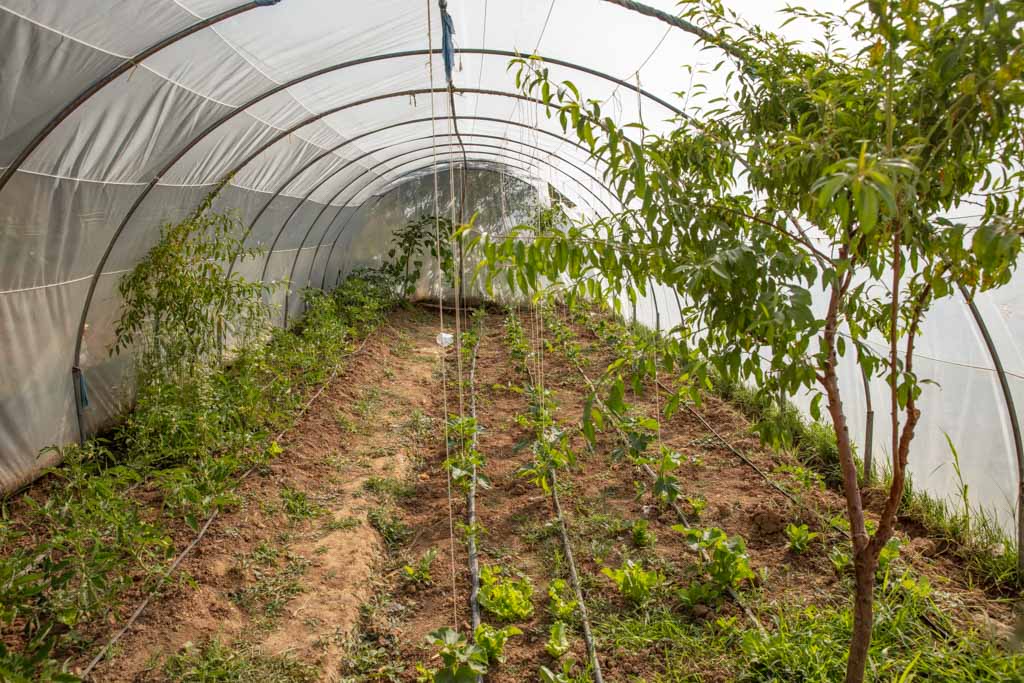
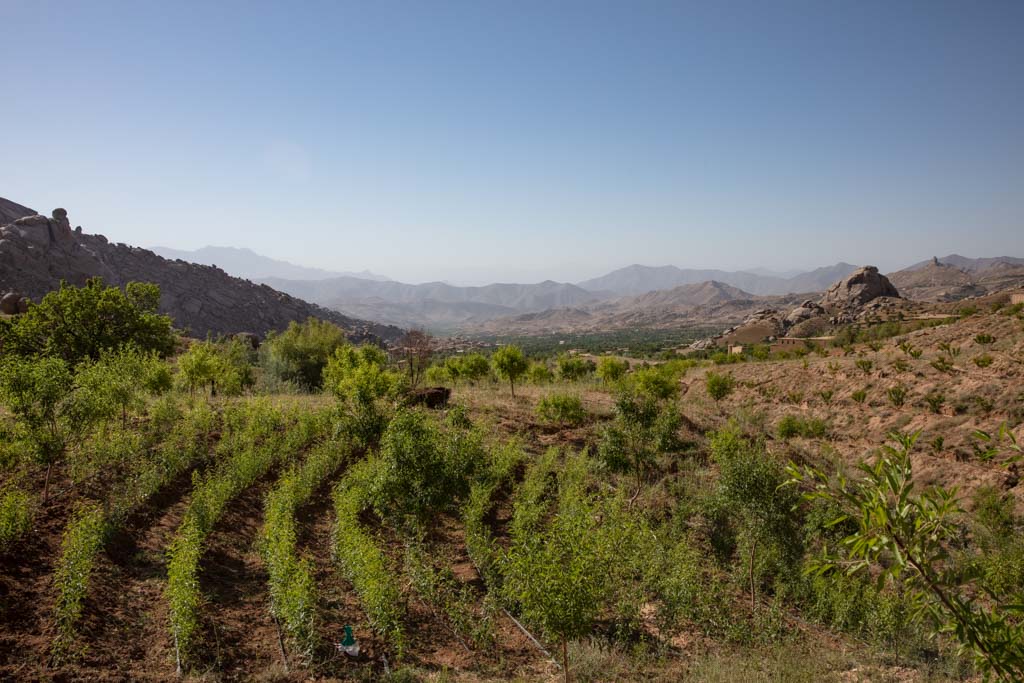
Almond cultivation had gone on to become a major driver of the Daykundi economy. The crop has become so important that every April the Gole Badam Festival is held in Nili to celebrate the blossoming of the almond trees and the upcoming season.
To be honest, I didn’t know much about almond trees before my visit to Nili and Daykundi. Growing up in Alaska, fruit trees, let alone nut trees, are still a bit of a phenomenon to me.
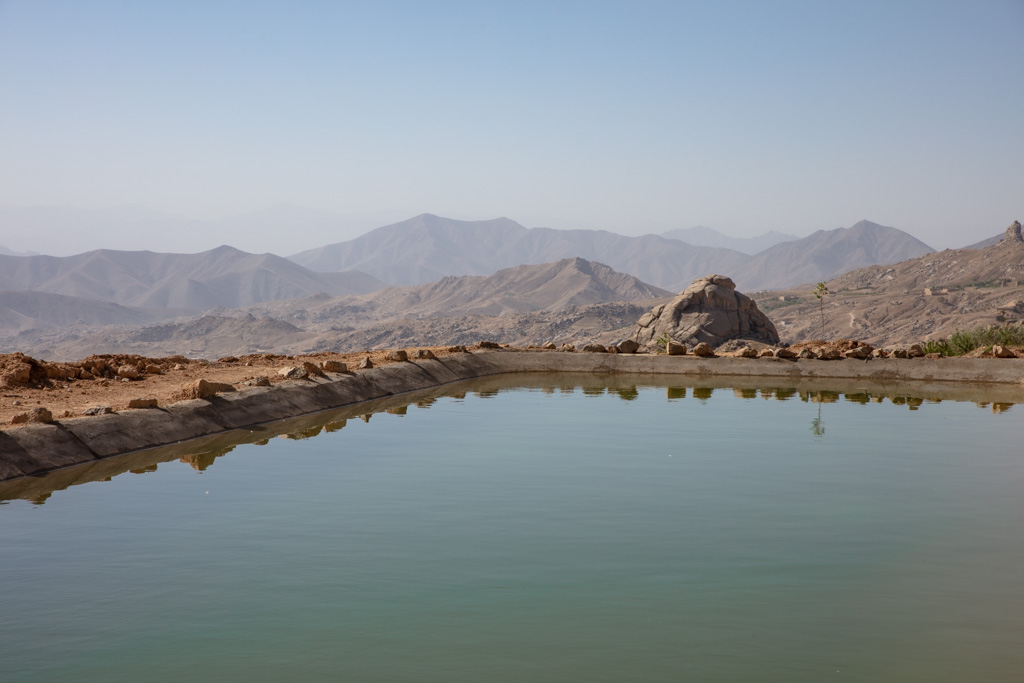
We explored orchards and greenhouses strewn throughout the hills that roll up and away from Nili. Learning about the different almond cultivars, the irrigation process, grafting, and other fruits that grow well throughout the province.

Riverside Oasis Lazir
Outside of Nili is a larger village by the name of Lazir, where a friend of Mohammed’s gave us a grand tour of his home village.
Lazir has an oasis-like feel as it sits on a river’s edge, straddling the waterway as it carves between barren peaks. A small bazaar unfolds along the main dirt road that cuts through the village, leading to a wooden footbridge that crosses the river.

On the opposite side of the river, a short trek will bring you up a cave that overlooks the valley below.

Strung along the river’s edge is a scattered chaikhana serving up fried fish.
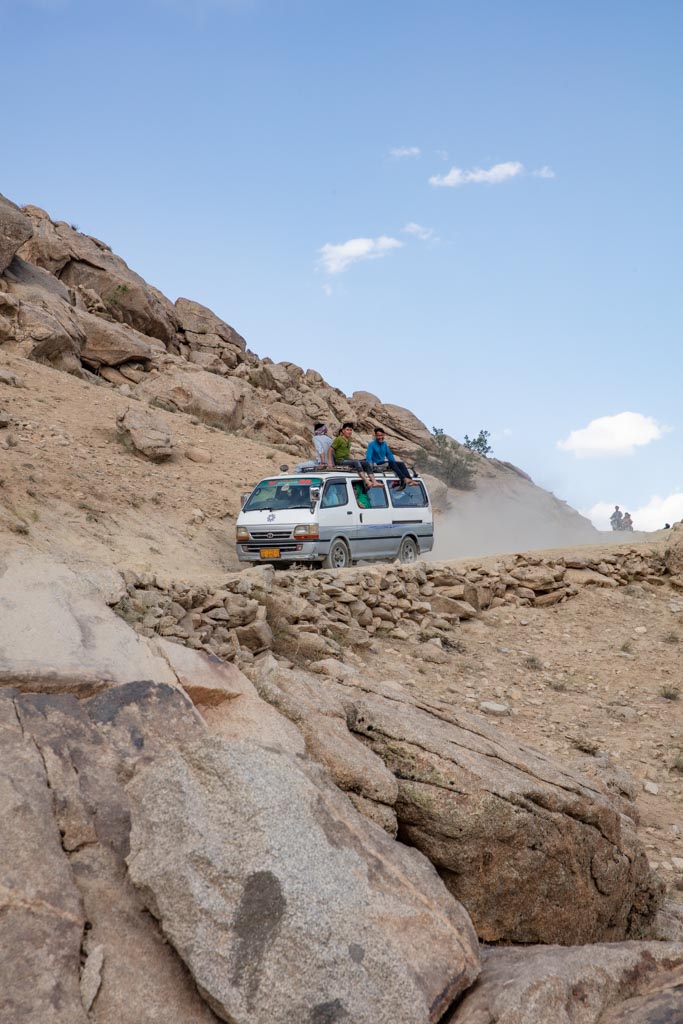

A Final Day in Nili
Our final day was spent visiting Nili’s Bazaar and around the small town before retiring to Mohammed’s house to sleep on the rooftop under the stars.
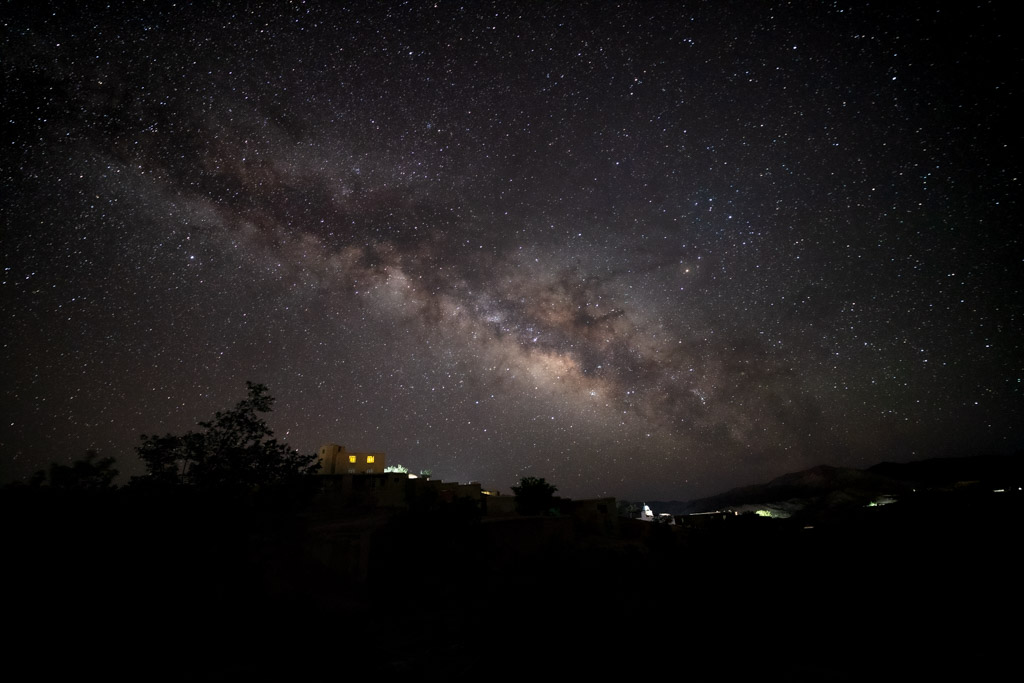
Going Back to Bamyan
As my visa was soon to expire and we were now on somewhat of a time crunch, we didn’t have time to explore the other districts of Daykundi as much as hoped since I did need to get back to Kabul. We managed to make the jaunt back to Bamyan Town from Nili in one long 14 hour day, making stops at a chaikhana for breakfast across the valley from Ghujurd Village, for lunch in Band e Kusa, and for an afternoon chai back in Panjab.
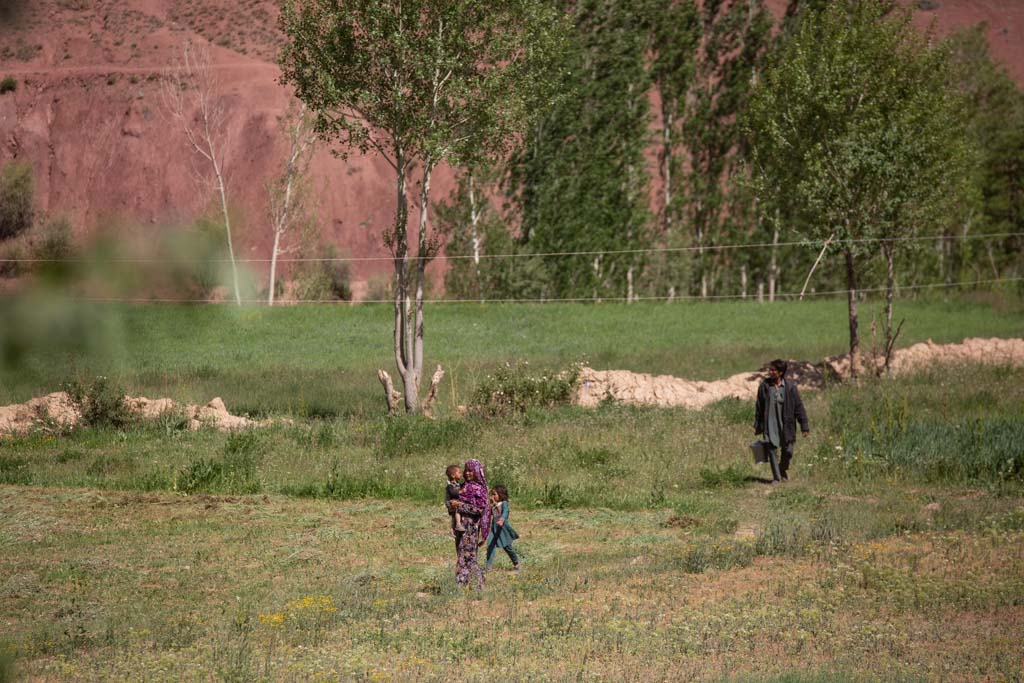
Practical Info for Daykundi
Where to Stay in Daykundi
As Daykundi is a rather undeveloped part of the country, the only existing official hotel, the Barg e Badam, is in Nili, attached to the airport. A single room goes for 2,500 AFS per night. Otherwise, if visiting Daykundi you will need to sleep at chaikhanas (expect cheap rates of 150-500 AFS per night) or in the homes of local families.
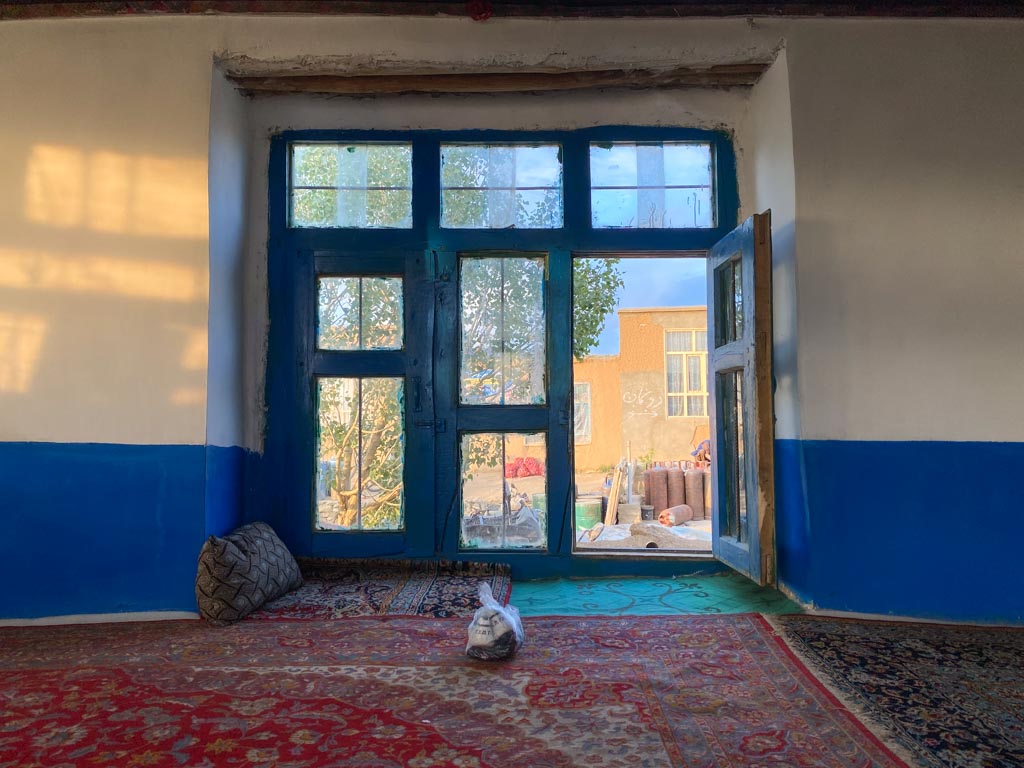
How to get to Daykundi
At the time of visit, the only feasible way to reach Daykundi Province was to hire a car via Bamyan Province (meaning taking the Ghorband Road from Kabul to Bamyan Town and then the main Bamyan-Nili Highway via Panjab).
Things have changed as of summer 2023 and it’s possible to reach Daykundi by shared transport from Bamyan, Kabul and other destinations.
It’s a long and bumpy journey to get out there, so I personally would opt to hire an entire car for comfort (this can be done for around $30 USD or less depending on how well you haggle. But the hardcore budget travelers will find shared taxis plying the route for a fraction of the cost.
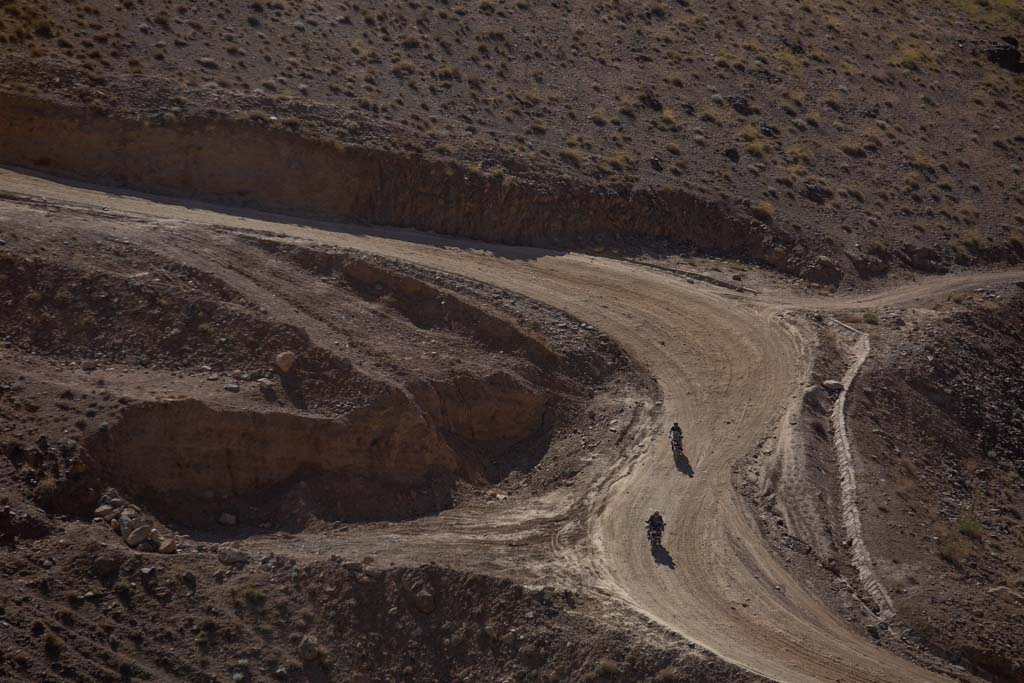
Have any questions about visiting Daykundi?
Ask in the comments section below.

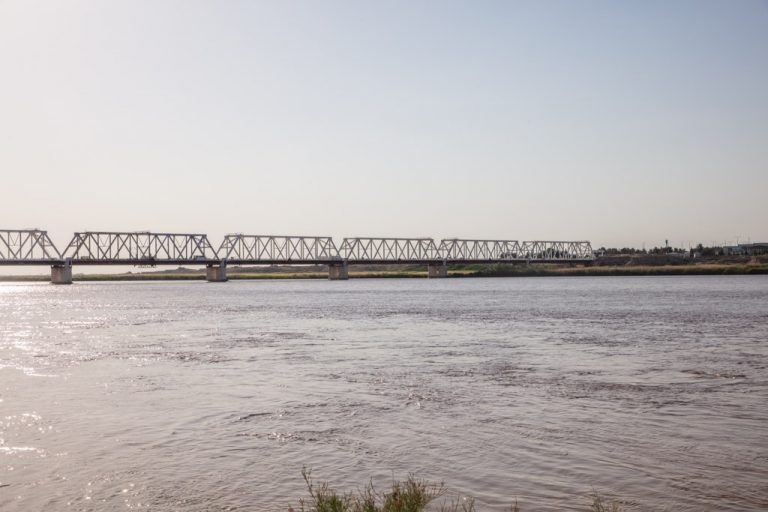
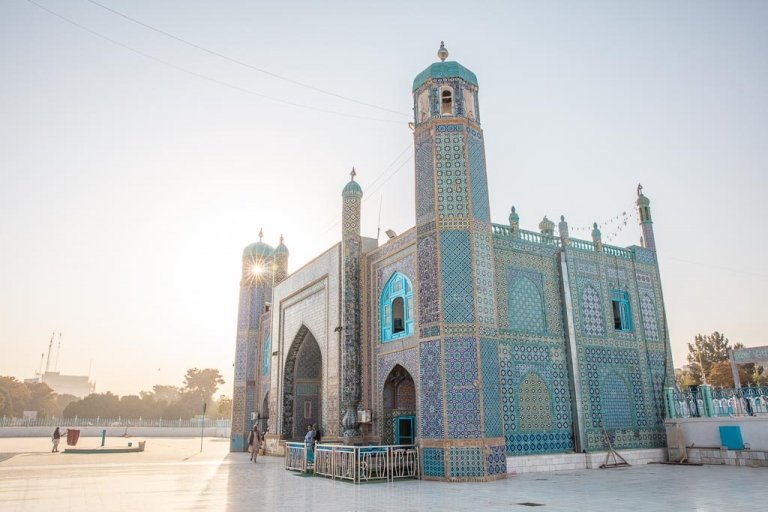
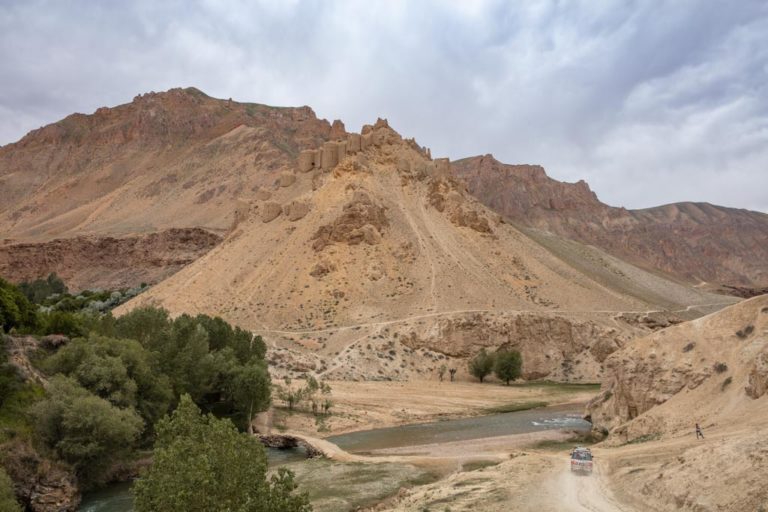
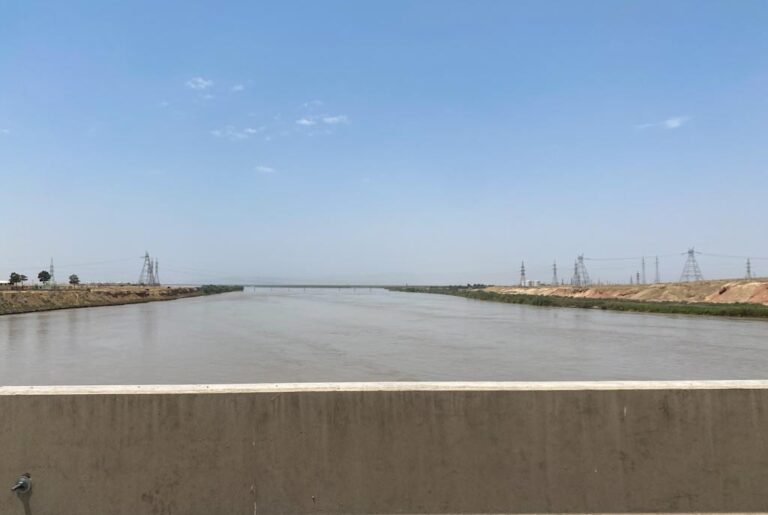


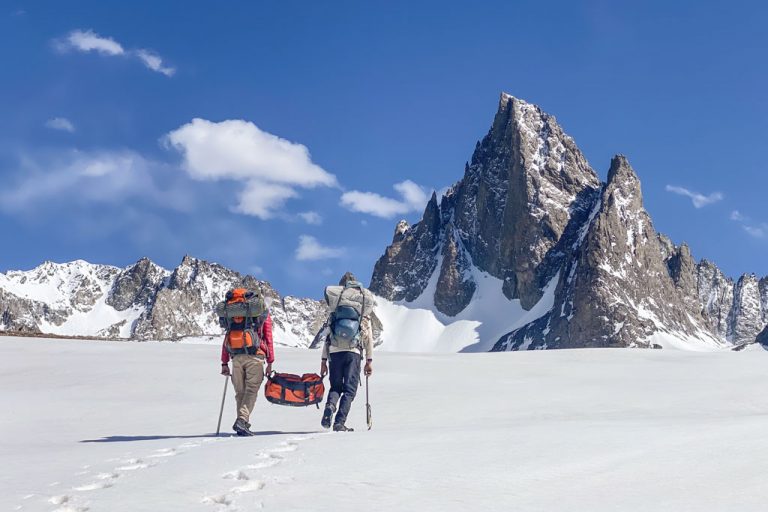
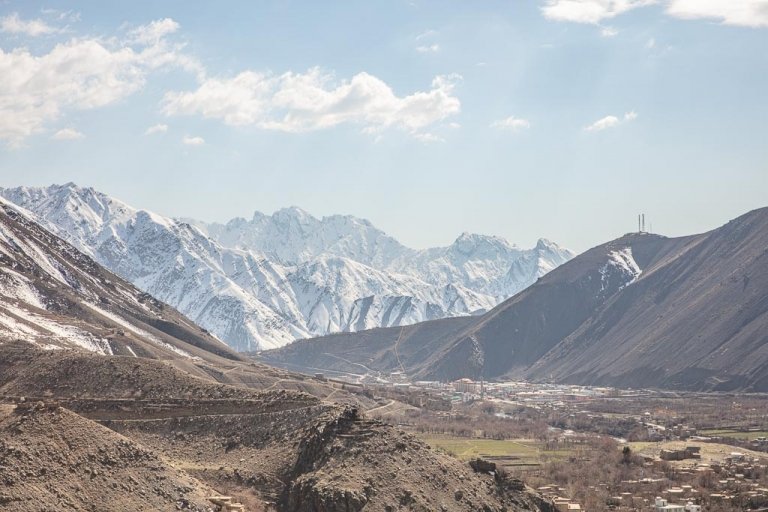


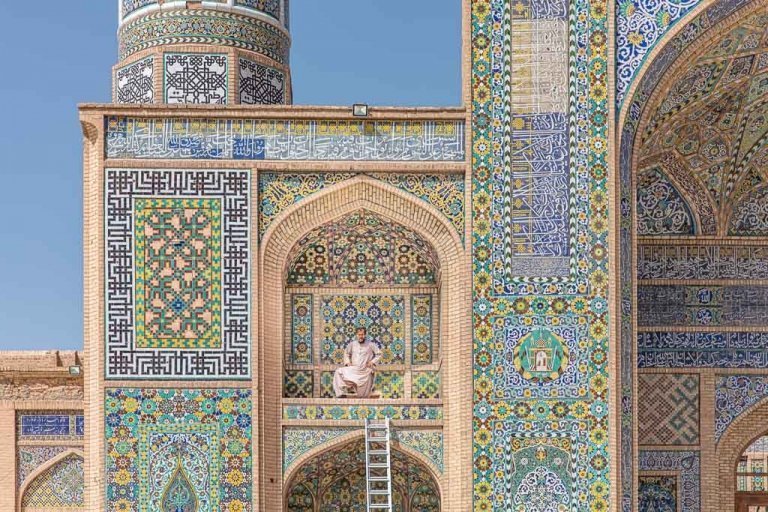


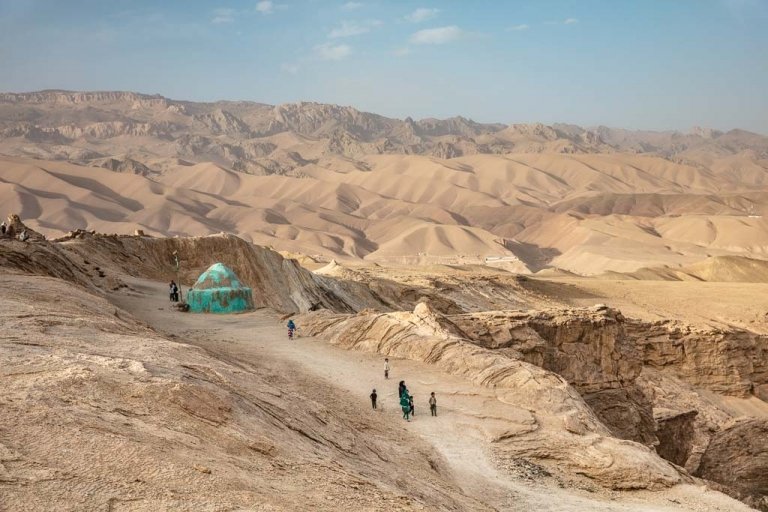

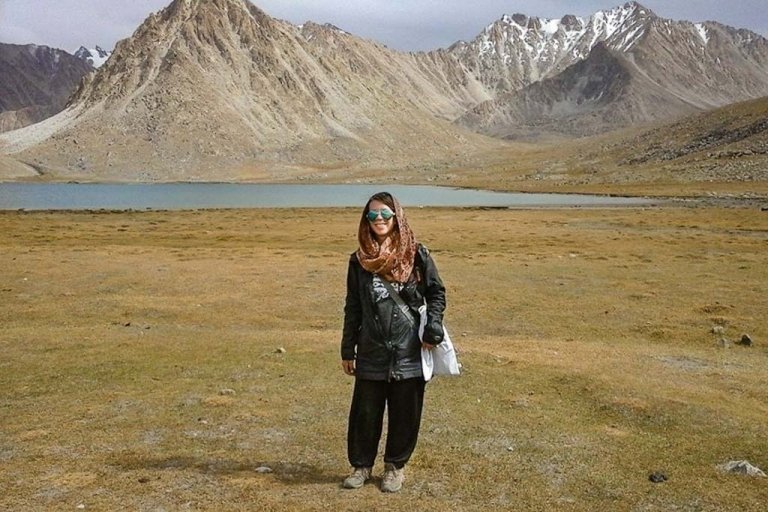
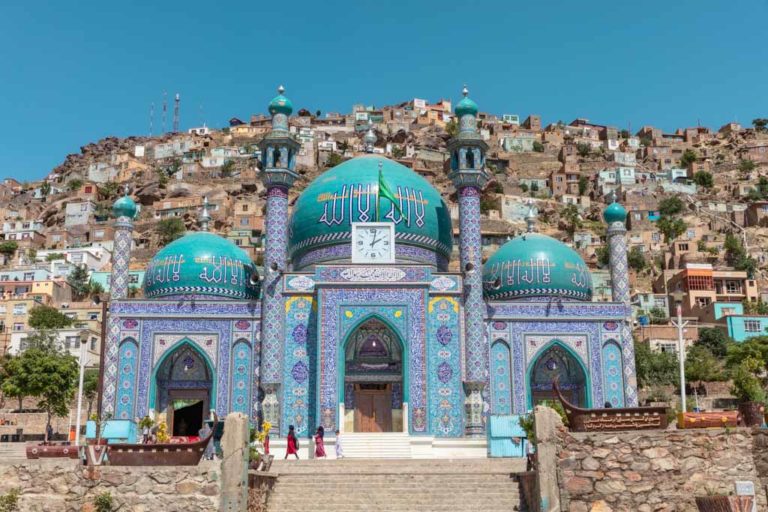
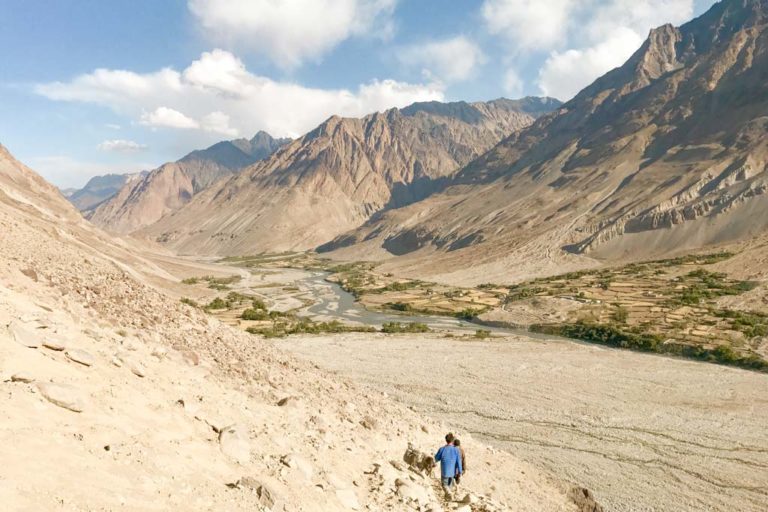

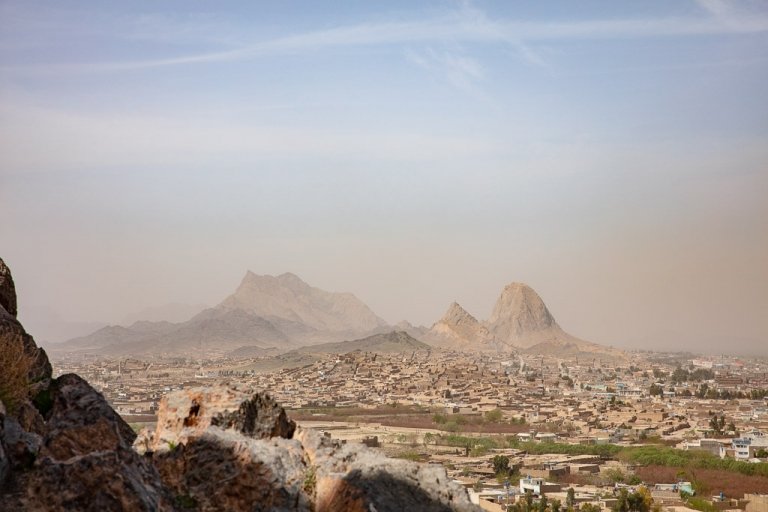
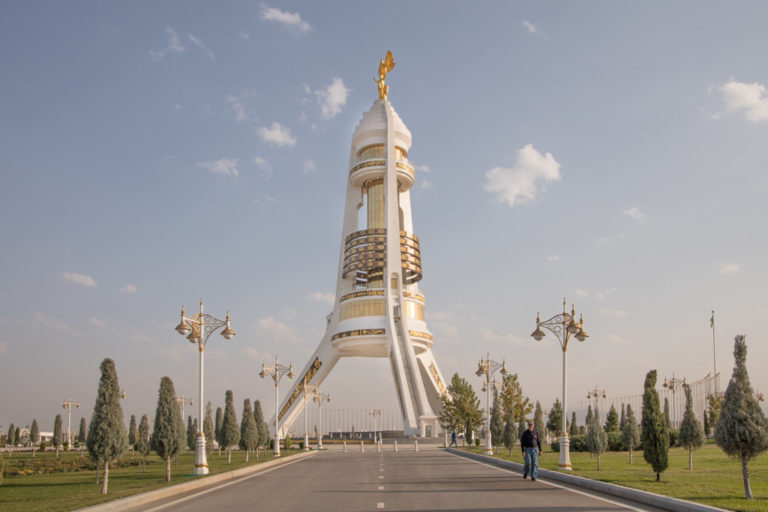
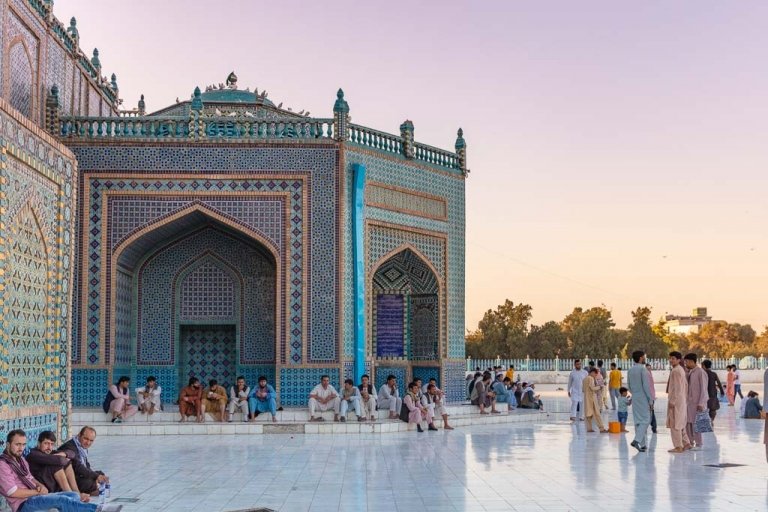

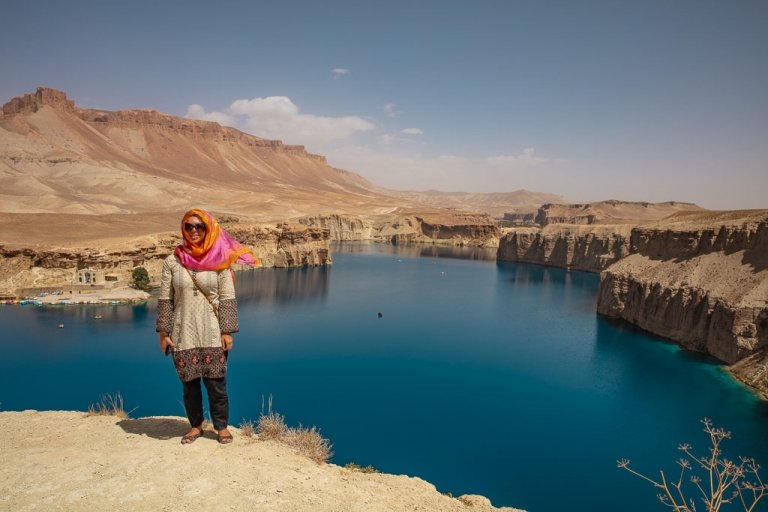

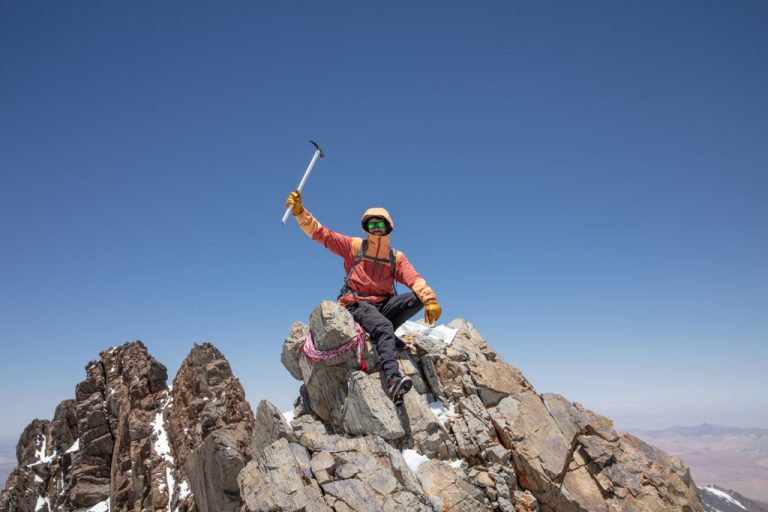
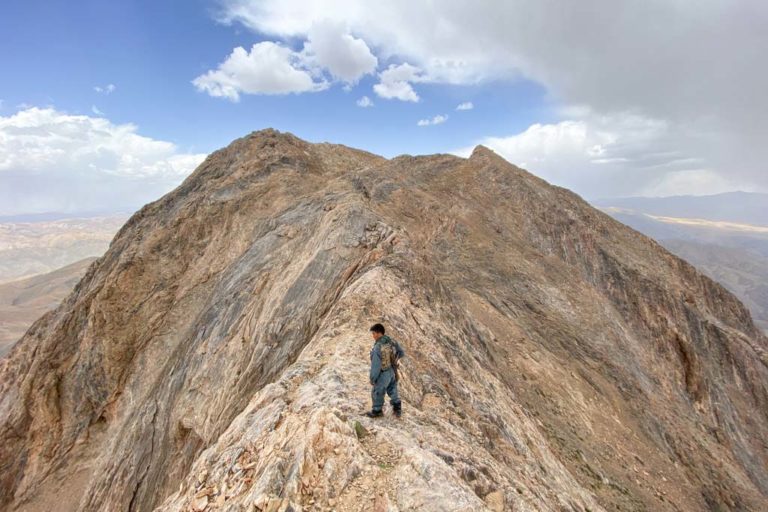


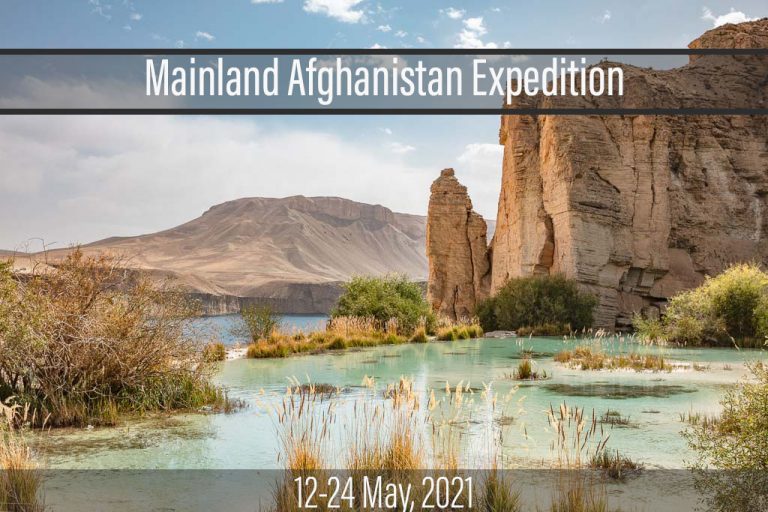

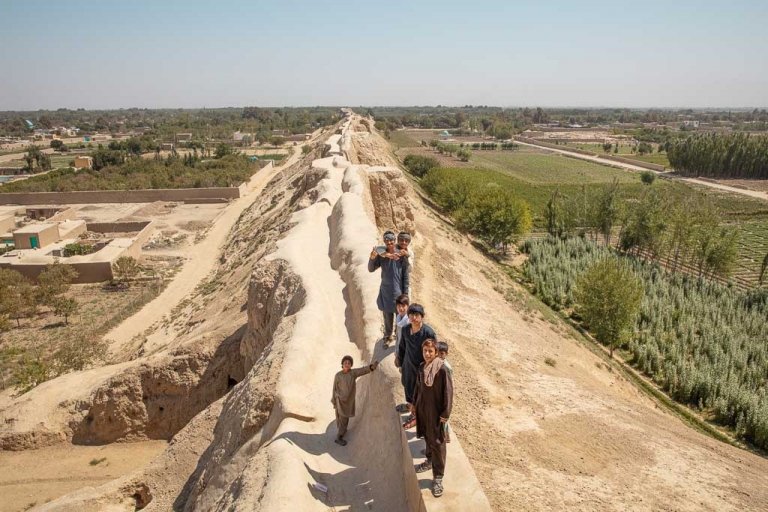
Absolutely fascinating!
The climb up to Lazir Cave looks a bit longer than “a short trek”, though. 😉
Haha more of a scramble up the last bit 😂